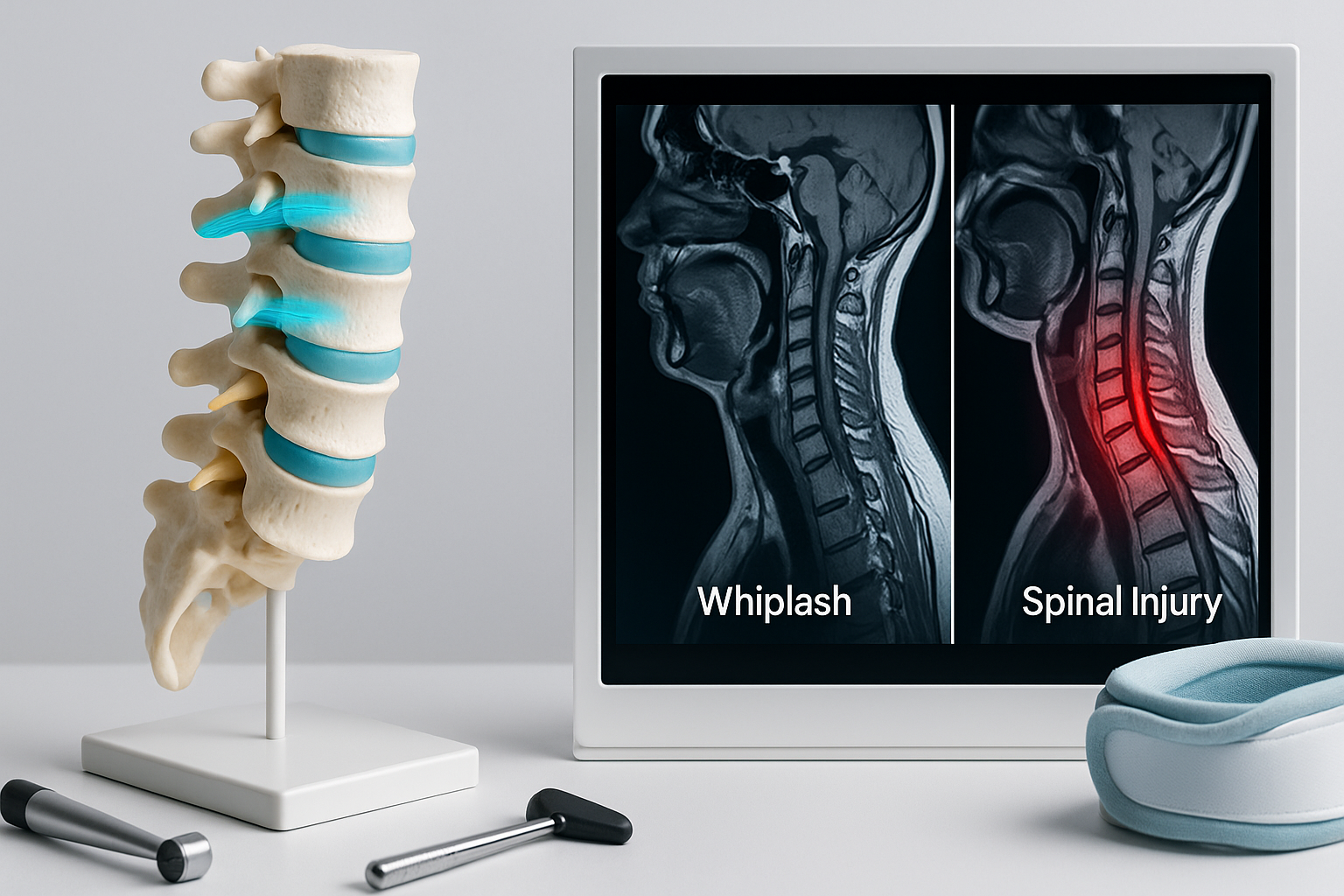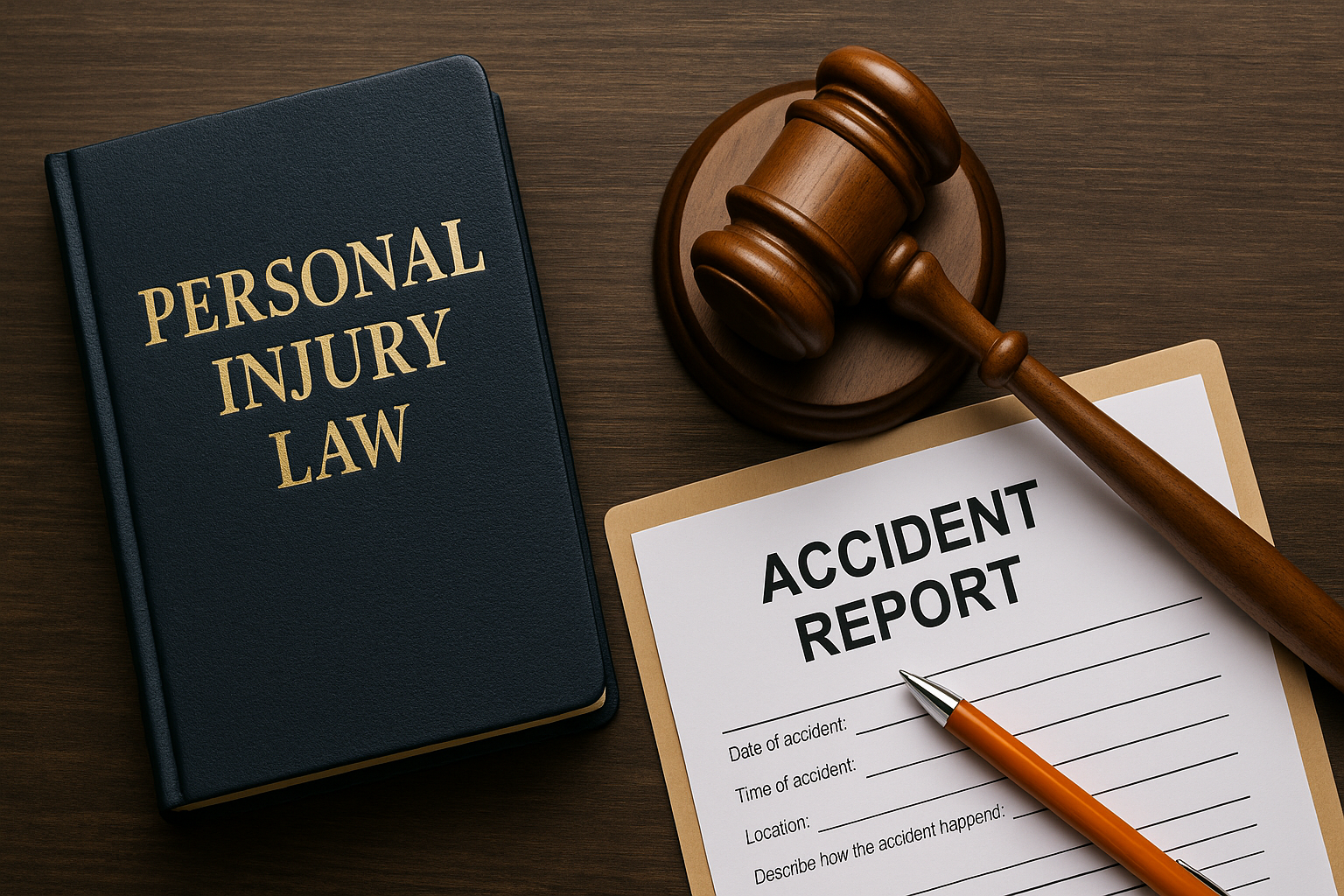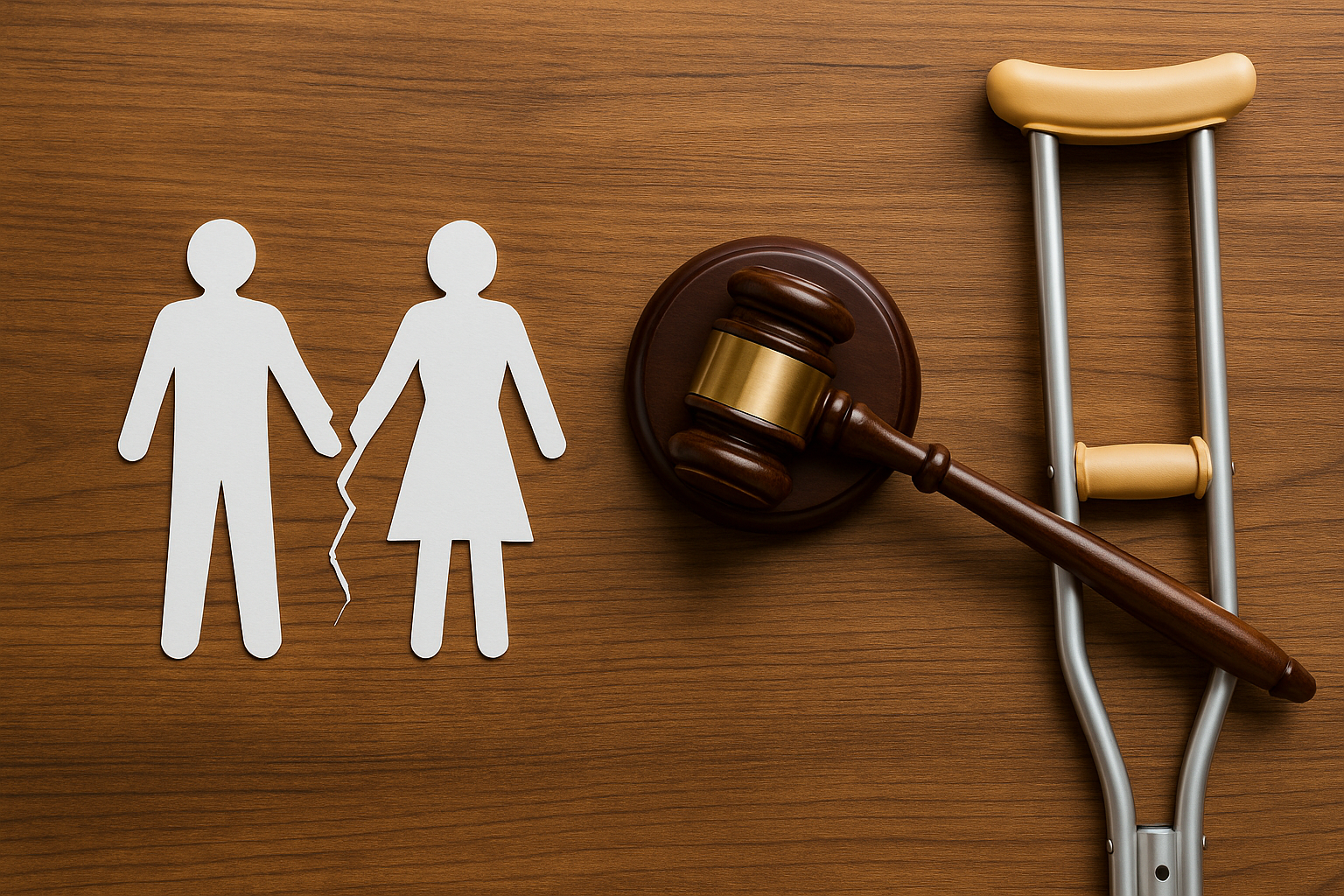Neck pain after a crash or fall can range from a temporary sprain to a serious spinal injury. Knowing the difference helps you decide when to seek emergency care, what tests to expect, and how to document the event for insurance or a legal claim.
Plain-English definitions
Whiplash
A soft-tissue neck injury from rapid acceleration and deceleration. It strains muscles, tendons, and ligaments around the cervical spine. Symptoms include neck pain and stiffness, headaches, reduced range of motion, and sometimes dizziness or shoulder pain. Most cases improve with conservative care.
Spinal injury
An injury to the vertebrae, discs, ligaments, or the spinal cord itself. This can include fractures, dislocations, severe disc herniations, and spinal cord injury. Symptoms can include severe neck or back pain, numbness or weakness, problems with walking, loss of bladder or bowel control, or breathing difficulty. A suspected spinal cord injury is a medical emergency.
Quick comparison table
| Feature | Whiplash | Spinal injury |
|---|---|---|
| Primary tissues affected | Neck muscles, tendons, ligaments | Bones, discs, ligaments, and possibly the spinal cord |
| Typical onset | Minutes to 72 hours after the event | Immediate, but may progress as swelling increases |
| Common symptoms | Neck pain and stiffness, headaches, limited motion, shoulder or upper back soreness | Severe neck or back pain, numbness or tingling, weakness, gait problems, bowel or bladder issues, trouble breathing |
| Red flags more typical | Persistent severe headache, worsening pain, midline neck tenderness | Any neurologic deficit, loss of bladder or bowel control, progressive weakness, deformity or malalignment |
| Usual testing | Clinical exam; imaging if criteria suggest risk | Immobilization first, then X-ray or CT; MRI if cord, ligament, or disc injury suspected |
| Usual treatment | Early movement as tolerated, pain control, targeted physical therapy | Emergency stabilization, imaging, possible surgery, inpatient or outpatient rehabilitation |
| Recovery outlook | Many recover within days to weeks; some need months | Highly variable; cord injuries may cause lasting disability |
When to go to the emergency department
Seek emergency care now if any of these are present after a crash, fall, or sports impact:
- Severe neck or back pain or a feeling of pressure in the spine
- Numbness, tingling, or weakness in arms or legs
- Problems with balance or walking
- Loss of bladder or bowel control
- Difficulty breathing after the injury
- Obvious deformity or a twisted position of the neck or back
How doctors decide on imaging
For alert adult trauma patients, clinicians often use validated tools to decide who needs imaging of the cervical spine:
- Canadian C-Spine Rule identifies high-risk features like age over 65, dangerous mechanism, or neurologic signs. Low-risk features can allow safe assessment of neck rotation without imaging.
- NEXUS criteria clear the spine without imaging if there is no midline tenderness, no focal neurologic deficit, normal alertness, no intoxication, and no painful distracting injury.
Both rules aim to catch significant injuries while avoiding unnecessary scans. Your clinician chooses the rule based on training and setting. If there are neurologic symptoms, midline tenderness, or high-risk mechanisms, expect imaging.
What whiplash care usually looks like
- Early, gentle motion and home exercises to restore range of motion
- Pain control with over-the-counter medicines as advised, heat or cold, and short-term prescription options when necessary
- Targeted physical therapy for posture, mobility, and gradual strengthening
- Activity guidance to keep you moving within limits and avoid re-injury
Most people improve in days to weeks. A minority develop longer-lasting symptoms that may require a tailored rehab plan.
What spinal injury care can involve
- Immediate immobilization to prevent further harm
- CT or X-rays to identify fractures or dislocations; MRI for cord, ligament, or disc injury
- Specialist care from trauma, neurosurgery, or orthopedics
- Rehabilitation focused on function, independence, and assistive technology where needed
Do I have whiplash, a spinal injury, or both
You can have whiplash and also have a structural spine injury. That is why red flags matter. If you have neurologic symptoms, midline spinal tenderness, or difficulty walking, treat it as a possible spinal injury until a clinician rules it out.
Symptoms that can appear later
Neck pain, stiffness, and headaches from whiplash may peak the day after a crash and improve gradually. Neurologic symptoms like numbness, progressive weakness, or new bladder or bowel changes require urgent reassessment.
Documentation tips that help claims
- Photograph vehicle damage, positions, skid marks, and any visible injuries
- Note date, time, location, and how the impact occurred
- Keep a daily symptom log and all receipts for medical visits, medications, and devices
- Ask for copies of your imaging reports and visit summaries
- If you miss work, keep wage records and employer notes
Frequently asked questions
How long does whiplash last
Many cases improve within days to a few weeks. More severe cases may take several weeks or months. Persistent symptoms warrant follow up.
Can a normal X-ray rule out spinal injury
X-rays can miss some injuries. CT is more sensitive for fractures, and MRI evaluates the spinal cord, ligaments, and discs. Imaging choice depends on your exam and risk factors.
Do I need a lawyer after a crash
If injuries are significant, symptoms are lasting, or liability is disputed, a lawyer can help protect deadlines, organize records, and handle insurers while you focus on recovery.
Key References
- Mayo Clinic. Spinal cord injury symptoms and emergency warning signs. Mayo Clinic
- NINDS. Spinal Cord Injury overview and symptoms. NINDS
- Mayo Clinic. Whiplash diagnosis and treatment overview. Mayo Clinic
- NHS. Whiplash summary and expected recovery. nhs.uk
- JAMA 2001. Canadian C-Spine Rule derivation study. JAMA Network
- NEJM 2000. NEXUS low-risk criteria validation. New England Journal of Medicine
- NEJM 2003. Canadian C-Spine Rule vs NEXUS diagnostic accuracy. New England Journal of Medicine
- Cleveland Clinic. Whiplash recovery time and management basics. Cleveland Clinic




